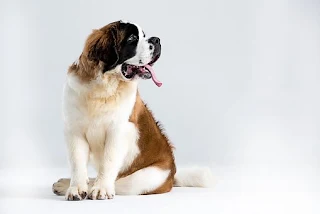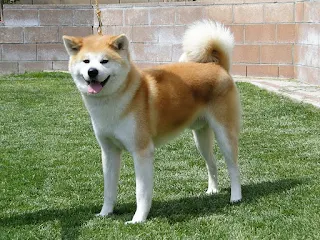WRITTEN BY XENA
THE HISTORY OF DOGS AND DOG BREEDS
We all know that DOG
is a man's best four-legged friend.
But have you ever wondered,
when and how it happened, and since when its origins date back? These and some
other questions, I will look back on, in this post.
DOGS are found in distant prehistoric in the Stone Age as evidenced by the oldest skeletons of DOGS,
found 12,000 years ago. Therefore, we can say that DOG is the first animal
species that was domesticated by man - before sheep, cattle, pigs, or ducks.
However, the real story of the development of the DOG as an animal species begins 50 million years ago, with the appearance of carnivorous mammals from the order of the beast.
They were carnivorous myacides with short legs and long bodies, as we find today in wolves and weasels. Their upper jaw had 2 strong tusks, 6 small incisors, and 6 molars, the lower also, plus 8 front teeth.
The DOMESTIC DOG (Canis
familiaris) also developed from them, and together with the wolf, coyote,
jackal, and fox, they belong to the Canidae family, which appeared 25-30
million years ago. Today we find them on all continents except Antarctica.
DOGS evolved during the
Oligocene period (34-23 million years ago) in the area of present-day North
America from animal size and fox-like.
There are several theories
about the origin of DOGS. Thus Darwin assumes that dogs evolved from wolves,
coyotes, and various species of jackals, while the famous modern zoologist,
Norad Konrad Lorenz believes that some BREEDS of DOGS evolved from wolves
and others from golden jackals. He later modified that theory, saying that the DOG
is actually a descendant of the Asian wolf species.
At the forefront of modern
science is the theory that DOGS evolved by domesticating the
wolf.
DOGS are thought to be
descended from jackals in the south and from WOLVES in the north. Its closest
relatives are the common wolf, jackal, prairie wolf, and Australian DOG
(dingo).
We come across the first
connections between man and wolf with the appearance of homo sapiens 40
thousand years ago, while the DOMESTIC DOG appears 12-15 thousand
years ago. The relationship between man and DOG was fully established
at the end of the Ice Age 10,000 years ago.
Here's how it all went. Man
has domesticated the wolf, isolating it in conditions different from its
natural habitat, which has influenced the development of new genetic traits of
the wolf — those similar to today’s DOMESTIC DOG.
Opinions that dominate are
that the domestication of DOG began in different areas of the
globe, as evidenced by the existence of different BREEDS from the very
beginning of breeding, and climatic and geographical conditions have played an
important role in this development.
Thus, in the area of Europe, South Asia,
and Australia the BREEDS were developed which are probably the descendants of the
little wolf from West Asia (Canis lupus Arabs), while in China the first DOGS
developed from the small Chinese DOG. It's assumed that the Eskimo BREEDS are descendants of the North American wolf. By crossbreeding and selection,
new BREEDS
have developed, and each of these BREEDS has further developed to lead
to other, new BREEDS, etc. All these BREEDS have been bred by man.
There are 358 BREEDS of DOGS in the world today. They differ
in physique, mental abilities, color and length of fur, temperament, visual
and auditory abilities, etc.
They can be divided into 5 groups:
1. VERY LARGE (from 45 kg and more)
2. LARGE (26 kg-44 kg)
3. MEDIUM (11 kg-25 kg)
4. SMALL (5 kg-10 kg)
5. VERY SMALL DOGS (up to 4 kg).
Except
for the zoological classification, there is one based on their practical
application: HUNTING DOGS (SETTER, POINTER, SPANIEL
...), SHEPHERD DOGS AND GUARDS (ST. BERNARD DOG, BERN
MOUNTAIN DOG, GERMAN SHEPHERD ...), LUXURY
DOGS (SPITZ, PEKINGESE
DOG, MALTESE DOG ...).
In the end, we can conclude that the DOG has always and in all periods of civilization played an important role for men, and the development of industry in the early 19th century "imposed" on him the popular "title" of PET, which he still proudly carries.
If you want to know something about wild dogs click here!
"We take care of our pets as for ourselves."















0 comments:
Post a Comment